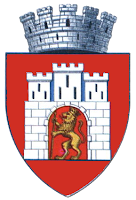 Situated in the middle of today's Romania, Sighişoara (Saksesch Schäsbrich, Šesburχ, German Schäßburg, Magyar Segesvár, or Latin Saxoburgum) is placed near the ancient Dacian settlement of Sandava, and the fortified Castrum Stenarum (or Capistenarum) with archaeological findings from Legio XIII Gemina.
Situated in the middle of today's Romania, Sighişoara (Saksesch Schäsbrich, Šesburχ, German Schäßburg, Magyar Segesvár, or Latin Saxoburgum) is placed near the ancient Dacian settlement of Sandava, and the fortified Castrum Stenarum (or Capistenarum) with archaeological findings from Legio XIII Gemina.
The fortress was built by Saxon settlers, invited to the region by King Géza II of Hungary to defend the eastern border. The town was first mentioned in 1280 by the name of Castrum Sex, and in 1298 as Schespurch but the settlement was already inhabited in 1191.
Placed at the trading crossroads the town was an important economic and religious center in the medieval times. In 1999, the inhabited citadel of Sighişoara was designated a UNESCO World Heritage Site, for its 850 year old testimony to the history and culture of the Transylvanian Saxons.
Nowadays a medieval festival is hosted every year at the end of July, when the peaceful fortress suddenly gets very crowded and noisy, but this is the time when the streets are filled with folk and rock music, jesters, street acts and handicraft.
More info on Wikipedia, Wikitravel and some here. The location is on Google Maps and some of my photos taken during the festival follow:
Sighişoara (Schäßburg/Segesvár)
Subscribe to:
Post Comments (Atom)













No comments:
Post a Comment